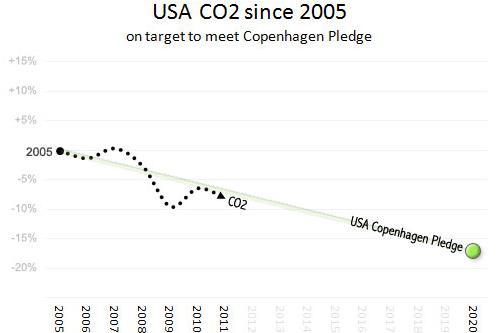---------------------------------------------------
2/3/2013, "NOAA Slays the Billion-Dollar Disaster Meme," Roger Pielke, Jr.
"The National Oceanic and Atmospheric Administration keeps a tally of "billion dollar disasters" which have occurred in the United States. The number of disasters which exceed the billion dollar threshold has increased since 1980. This increase has been often cited as evidence that the climate has become more extreme and is attributable to emissions of carbon dioxide.
A new peer-reviewed paper from NOAA pours cold water on both claims.
Adam Smith, of NOAA, and Rick Katz, a statistician and former colleague of mine at NCAR, have a paper just out in the journal Natural Hazards in which they take a close look at the index. What they find reinforces conclusions found in earlier work on disasters and climate change. Specifically, if you are looking for climate signals in extreme events, look first at climate data. If you are looking at loss data, avoid aggregated, non-normalized loss records.
Here is what the new analysis finds:
1. The number of billion dollar disasters has increased by about 5% per year since 1980, but (perhaps surprisingly) the loss per event has not:
[T]here is no apparent time trend in economic loss from individual disasters. In fact, a least squares trend analysis estimates a very slight decreasing trend of about 0.5 % per year.So they find more events that exceed the billion dollar threshold, but not more severe events.
2. The dataset is dominated by hurricane, drought and thunderstorm losses which together account for more than two thirds of all events and more than 80% of all losses. As readers here will know well, there are no long-term trends in normalized US hurricane losses, North American drought has decreased and there has been no increase in tornado damage (note that thunderstorm damage also includes hail and straightline winds). This alone provides a strong caution to using the NOAA index for purpose of claims about extremes in general.
3. The new paper warns on the use of crop losses, which are included in the NOAA data in the loss categories of tropical cyclone, severe storm, winter storm, wildfire, drought/heat, flooding and crop freeze -- that is to say, in every category. The warning is that:
Given the increasing trends in [crop] yields attributable to technological innovation and given fluctuations in price, it is difficult to attribute any part of the trends in losses to climate variations or change, especially in the case of billion-dollar disasters. [see chart at link]
In fact, one of the most important contributions of the paper might be its finding that crop losses have not increased as a proportion of liability (as shown in the figure above from the paper), or as it concludes, "for these three major crops, the trends in losses are comparable in magnitude to the trends in liability."
The billion dollar loss dataset includes no adjustments for changes in crop value, yield or other relevant factors, nor does the widely cited Munich Re data. The implication of course is that some significant but unquantified portion of the increase in billion dollar losses reflects non-climatic trends in crop production and value.
4. Their paper concludes by noting the the billion dollar disaster database is adjusted only for inflation and has not been normalized to account for other changes. They explain that
The magnitude of such increasing trends is greatly diminished when applied to data normalized for exposure (Pielke et al. 2008).Smith and Katz have properly identified the severe limitations to the NOAA billion dollar loss database.
Any bets as to whether NOAA will issue a press release as a corrective to its earlier hyping of the index and promoting its misuse?
Even if they don't, the new paper is a valuable contribution." via Climate Depot
====================================
11/19/12, "More than 1,000 New Coal Plants Planned Worldwide," Damian Carrington, UK Guardian
"India is planning 455 new plants compared to 363 in China."...
Most new coal-fired plants will be built by Chinese or Indian companies. But new plants have largely been financed by both commercial banks and development banks.
JP Morgan Chase has provided more than $16.5bn (£10.3bn) for new coal plants over the past six years, followed by
Citi ($13.8bn).
Barclays ($11.5bn) comes in as the fifth biggest coal backer and
the Royal Bank of Scotland ($10.9bn) as the seventh.
The Japan Bank for International Co-operation was the biggest development bank ($8.1bn), with
and that
they will have to be reined in by governments."
In January, the Bank of England was warned that fossil fuel sub-prime assets posed a systemic risk to economic stability,
because only 20% of the reserves of the top 100 coal and top 100 oil
and gas companies could be burned while keeping the global temperature
rise under the internationally agreed limit of 2C."
Confino, if you cared about the planet, you'd notice the US leads the world in reduction of CO2 emissions which are heading even lower:
6/4/12, “Climate change stunner: USA leads world in CO2 cuts since 2006,” Vancouver Observer, Saxifrage

“Not only that, but as my top chart shows, US CO2 emissions are falling even faster than what President Obama pledged in the global Copenhagen Accord.…
Here is the biggest shocker of all: the average American’s CO2 emissions are down to levels not seen since 1964 --over half a century ago. …Coal is the number two source of CO2 for Americans. Today the average American burns an amount similar to what they did in 1955, and even less than they did in the 1940s. …It is exactly America’s historical role of biggest and dirtiest that makes their sharp decline in CO2 pollution so noteworthy and potentially game changing at the global level.”...
——————————————————————
4/21/12, “Why [CO2] Emissions Are Declining in the U.S. But Not in Europe,” by Michael Shellenberger and Ted Nordhaus, newgeography.com
.
.
“As we note below in a new article for Yale360, a funny thing happened: U.S. emissions started going down in 2005 and are expected to decline further over the next decade.”
- =============================
"“What the government has not mandated, the economy is doing on its own: emissions of global warming gases in the United States are down.
According to the Energy Department, carbon dioxide emissions peaked in this country in 2005 and will not reach that level again until the early 2020s.”…
—————————————————————
8/16/12, “AP IMPACT: CO2 emissions in US drop to 20-year low,” AP, Kevin Begos
“In a surprising turnaround, the amount of carbon dioxide being released into the atmosphere in the U.S. has fallen dramatically to its lowest level in 20 years."...
--------------------------------------------------------------------
News of US CO2 plunge has been described as:
- “Surprising,“
- “little noticed,“
- “dramatic,“
- “stunner,“
- “most people are surprised to learn,“
- “quiet but tremendous progress,”
- “major long term implications,”
- “game changing,”
- “shocker,”
- “huge contrast to the forecast.”
Confino is unaware that climate “action” was mandated by the US government over 2 decades ago. CO2 terror wasn’t embedded in popular culture in 1990 but US politicians had big plans for it whether “action” was needed or not:
Global Warming ‘action’ was institutionalized in US government in 1990 by George Bush the 1st in the “U.S. Global Change Research Act of 1990.” CO2 reduction is mentioned near the end in Section 204, #4.
Devoting 13 federal agencies to ‘climate’ matters is hardly lagging in “action.”
Trillions have been taken from US taxpayers for climate endeavors via agency budget allocations, tax subsidies, diversion of US military to climate or green projects, countless federal regulations, vast sums shipped out in no strings foreign aid for ‘climate’ capacity building, etc.
Other countries’ CO2 hasn’t dropped despite hundreds of billions spent on cap and trade and extra taxes. This isn’t to say the US government hasn’t become business partners with the ‘climate’ industry.
=====================
11/28/12, “Toxic effect of China environmental nondisclosure,” MarketWatch, via Caixlin online
———————————————–
12/13/10, “Perverse’ CO2 Payments Send Flood of Money to China,” by Mark Schapiro, Yale Environment 360
-----------------------------
1/16/13, “China’s Green Leap Backward,” The Nation, Lucia Green-Weiskel
-------------------------

Above, August, 2007: “China’s industrial growth depends on coal, plentiful but polluting, from mines like this one in Shenmu, Shaanxi Province, behind a village store,” NY Times.
===========================
Confino, how do you like this creative action against CO2 terror:
US 'climate action' in Nov. 2012 included giving $6 billion US taxpayer dollars for 'clean energy' to the Sultan of Brunei who owns 5000+ cars and to the Pres. of Indonesia, whose country is so corrupt even the World Bank says crime adds 20% to costs.
Below, one of the Sultan of Brunei's cars:
7/24/12, "The Sultan's Cars," wheel to wheel blog.
===============================
1/12/13, "Greens Misread the Climate Tea Leaves," Walter Russell Mead, Via Meadia
"The gravest danger to Earth these days isn’t climate skepticism; it’s the broken, Malthusian and statist green policy imagination. Wedded to grandiose and unworkable “solutions”, greens feel they must push the panic button at every opportunity to stampede the world into embracing an unworkable and unsustainable policy agenda.
It won’t work. The Al Gore path (alarmism, hypocrisy, dumb policy solutions, green pig lipsticking or corporate subsidies disguised as green breakthroughs) will not bend the curve. Until the green movement internalizes this lesson and moves on, it will waste its energy on foolishness like the failed Kyoto Protocol and ethanol subsidies and greens will have little constructive impact on a planet they claim to love."
.


No comments:
Post a Comment